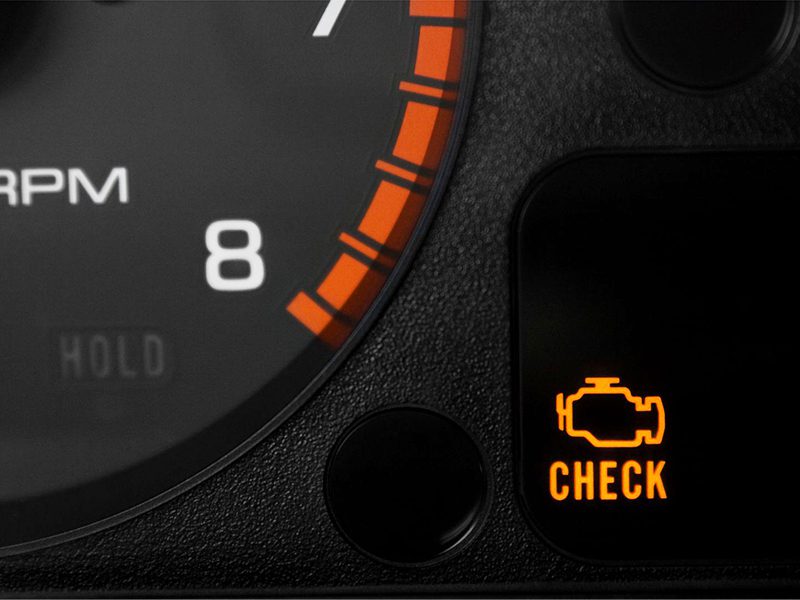Seeing your car’s check engine light turn on is never fun, but it doesn’t have to be a mystery. Your vehicle is trying to tell you something, and with the right tools and expertise, you can figure out what that is before it turns into a pesky repair bill.
In this guide, we’ll cover how to diagnose a check engine light (CEL), common engine light check codes, and whether you can fix it yourself. So, if you want to understand why your engine light is on and how to troubleshoot your car like a pro, you’re in the right place. Let’s get started!
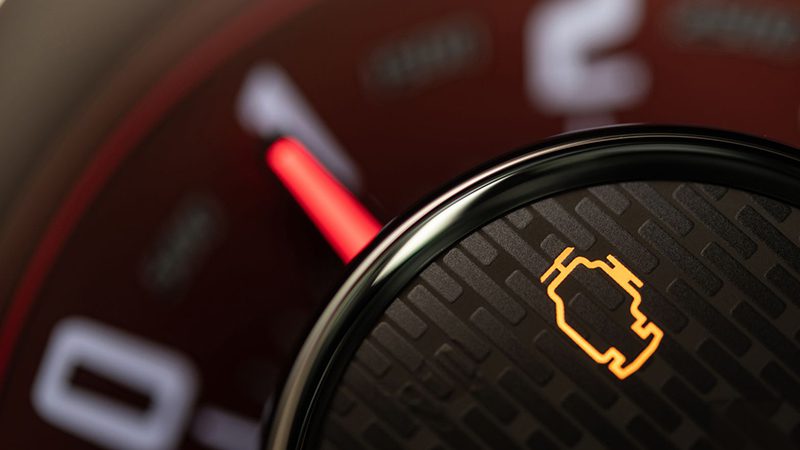
Why Is My Check Engine Light On?
Whenever your car’s engine computer detects an exact problem, it will turn on the check engine light, also known as the malfunction indicator lamp. This could point to a relatively minor issue, such as a gas cap that hasn’t been properly tightened, or a more serious issue, such as heavy engine misfire.
Depending on your car, the check engine light is likely to appear within the car’s dashboard colored in either orange, yellow, amber, or green, but the green one does not signal any issues.
There are two types of check engine warnings, and they indicate different situations based on whether the light is steady or blinking. A blinking check engine light usually means an engine misfire or other more serious issues requiring immediate attention.
If the light stays on constantly, the issue may be less urgent—but that’s not always the case. That’s why we’re going to break down how to tell the difference and what each scenario means for your car and your wallet.
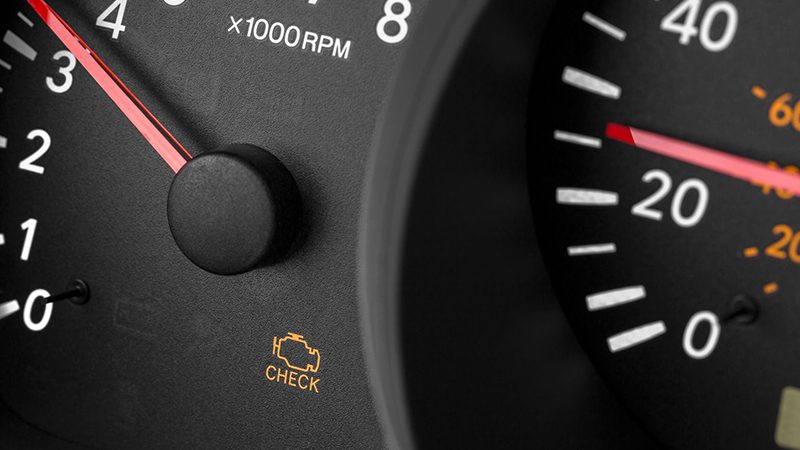
7 Common Reasons Your Check Engine Light Is On
- Loose/Faulty Gas Cap -If your gas cap isn’t properly tightened or is malfunctioning, fuel vapors can escape. Your ECU will detect the emissions control system error and thus trigger the check engine light.
- Oxygen Sensor and Catalytic Converter Issues -If the oxygen sensor starts causing trouble, it will affect your car’s catalytic converter and overall performance. This will also likely lead to a check engine light.
- Mass Airflow Sensor Issues -The MAF sensor is tasked with controling the volume of air making its way into the engine. Whenever it starts failing or detects air and fuel mixture problems, it will likely trigger the car’s check engine light.
- Ignition Coil or Spark Plug Problems – The coil and spark plug system controls the overall ignition, which needs to be precise. If it isn’t and the car misfires, the check engine light will always turn on.
- EGR Valve Failure – An EGR valve problem disrupts exhaust gas recirculation, affecting emissions and combustion efficiency and lighting up your check engine light like a chrismas tree.
- Vacuum Leak – A vacuum leak will likely alter the air-fuel mixture, making the engine performance run too lean or too rich, and once again, the check engine light illuminates.
- Faulty Thermostat – A faulty thermostat is often a root cause of overheating. If the CTS (coolant temperature sensor) detects a dangerous deviation—whether from actual temperature issues or a faulty sensor—it triggers the check engine light.
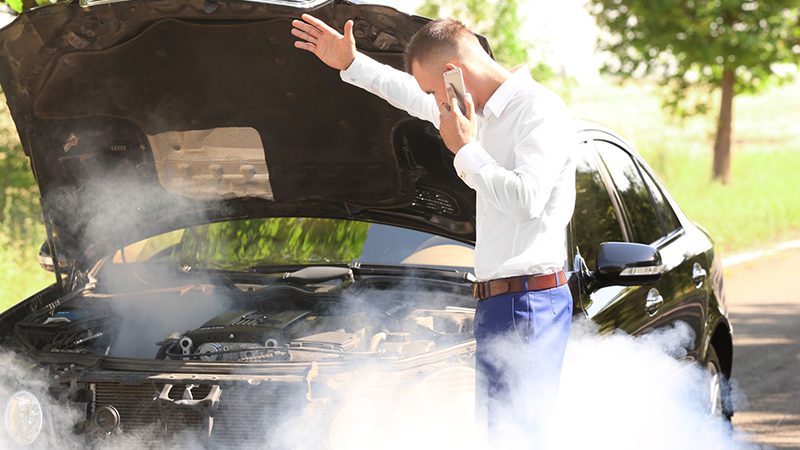
How to Diagnose Check Engine Light Problems
As mentioned previously, a CEL can mean many things, and knowing what exactly is the problem is the key to solving the big problem. So, now it’s time for a step-by-step guide on how to do just that.
1. Check the Loose Gas Cap and Visible Issues
To kick things off, try using your eyes only. Check the fuel cap to see if it is sealed properly, also be sure to check under the hood for any signs of leaks, frayed wires, or disconnected engine lines. Sometimes the issue can be as easy as tightening a screw, so it would be best to check such issues first.
2. Use an OBD-II Scanner to Scan Codes
An OBD-II scanner (Code Reader) connects to your car’s diagnostic (OBD) port and retrieves check engine light diagnostic trouble codes (DTCs) that provide substantial clues about the issue. Understanding these is vital for pinpointing the problem accurately.
Many auto parts stores offer free car scans while many modern cars can relay data via OBD-II ports to smartphone apps. If you want to learn how to use an OBD scanner properly, click here.

3. Interpret the Codes and Identify the System at Fault
After you scan the car and retrieve an error code reader, you should do your best to interpret it correctly. To do so, it would be best to check the car’s owner/repair manual or even consider online DTC search engines and common DTC lists.
This step can help you understand whether the problem is minor or something that needs immediate attention, so be sure to do your due diligence.
4. Monitor Symptoms and Perform Basic Checks
Checking for symptoms related to a specific check engine light code can provide additional clarity in determining whether the issue is serious or has progressed significantly.
Listen for unusual engine noises, rough idling, misfires, or hesitation. Watch for sudden drops in fuel system efficiency. If the CEL blinks, be cautious; if not flashing, the issue may not be urgent.
5. Addressing Minor Issues
If the problem is minor and can be resolved without a mechanic, it’s best to save your money and try to solve it yourself. A loose gas cap is a common culprit—simply tightening or replacing it may turn the light off.
Other easy fixes include replacing air filters, spark plugs, or oxygen sensors, which can improve engine efficiency and prevent further issues. Many car owners never go past this point, but if you can, you should.
6. Reset the CEL and Ask for Professional Help if Needed
By this point, you should be aware of what specific code is causing problems and whether these are indeed serious problems.
If it isn’t, you can use an OBD-II scanner once more to clear the check engine light and wait to see if similar issues occur. On the other hand, if the issue is indeed a bigger one, or you are not quite sure what is wrong with the car, it’s best to seek professional help.
Either way, it’s best not to reset the vehicle’s check engine light if you are not 100% sure the problem has been fixed as problems such as these simply shouldn’t be swept under the rug.

Common Check Engine Light Codes and Their Meanings
Now, let’s review the most common DTCs (check engine light codes), their meanings, and whether they can be fixed as soon as possible as a DIY task or require professional attention.
| No | Code | Meaning | DIY vs Profesional |
|---|---|---|---|
| 1 | P0300 | Random/multiple cylinder misfire | Professional |
| 2 | P0420 | Catalytic converter efficiency below threshold | Professional |
| 3 | P0171 | System too lean | DIY/Professional |
| 4 | P0172 | System too rich | DIY/Professional |
| 5 | P0455 | Large EVAP system leak | DIY |
| 6 | P0442 | Small EVAP system leak | DIY |
| 7 | P0113 | Intake air temperature sensor circuit high | DIY |
| 8 | P0507 | Idle control system RPM higher than expected | DIY/Professional |
| 9 | P0401 | EGR flow insufficient detected | Professional |
| 10 | P0562 | System voltage low | DIY/Professional |

What Are the Serious Check Engine Light Problems?
Various check engines’ light-inducing problems, like a failing catalytic converter or malfunctioning transmission, indicate serious underlying issues that require professional attention as soon as possible.
Diagnosing these problems tends to be more difficult, as they often involve multiple interconnected systems which can only be diagnosed via higher-end OBD-II scanners, if at all.
Whatever it may be, ignoring the check engine light—especially if it’s flashing—can lead to catastrophic engine failure, drivability issues, or even leave you stranded. Mechanics often see minor issues snowball into expensive repairs simply because they weren’t addressed in time.
For example, a faulty catalytic converter, can overheat and damage surrounding components, while a failing transmission may lead to sudden loss of power or kill your clutch.
Brushing off these dashboard warning lights and signs not only increases repair costs but can also make future check engine light diagnostic more difficult and time-consuming which is why you have to stay proactive and on top of everything that needs fixing.
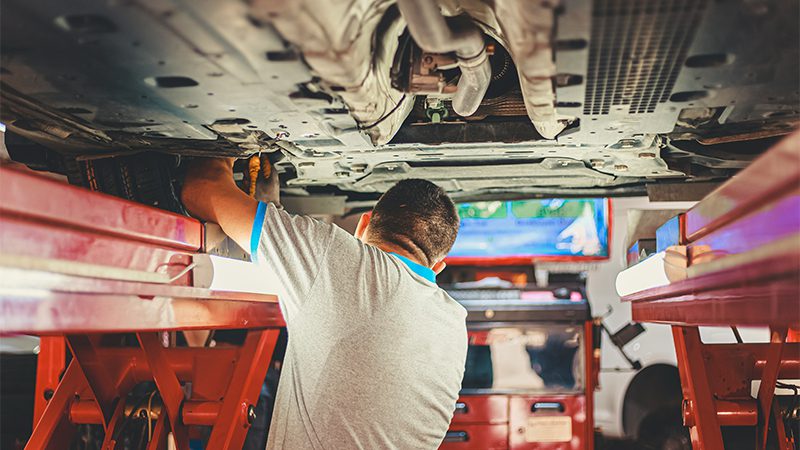
Preventing Unnecessary Check Engine Lights Through Timely Maintenance
The reality is that most check engine light activations are completely avoidable with proper maintenance and prompt attention to expected issues. A good old loose gas cap is one of the most common and easiest-to-solve issues.
Regular maintenance—such as replacing air filters, spark plugs, and sensors before they fail —helps keep the engine at its best all while preventing unexpected car check engine lights.
Well-versed mechanics know that ignored issues can gradually snowball, and lead to bigger, costlier repairs. Mastering these basic troubleshooting skills, maintaining your car, and having an OBD-II scanner will save you money down the line.
Can I Drive with the Check Engine Light On?
What to do when the check engine light comes on? In most cases, driving with a check engine light won’t affect engine performance or do any major harm to your car’s health, but not all check engine lights are the same, and some situations do require increased vigilance.

Flashing Check Engine Light
A flashing CEL indicates a rather serious issue, like a misfire. These can cause severe further damage if ignored which is why you should stop driving immediately and seek professional help as soon as possible.
Constant Check Engine Light
A constantly illuminating CEL tends to suggest a less urgent issue, such as a faulty sensor or emissions problem. The car may still be drivable, but ignoring it can lead to reduced performance, poor fuel economy, or costly repairs over time.
Even if the CEL remains on, it doesn’t indicate how severe or advanced the issue is. You should only drive with the light on if you fully understand the problem and its extent—but if you do, you might as well fix it.
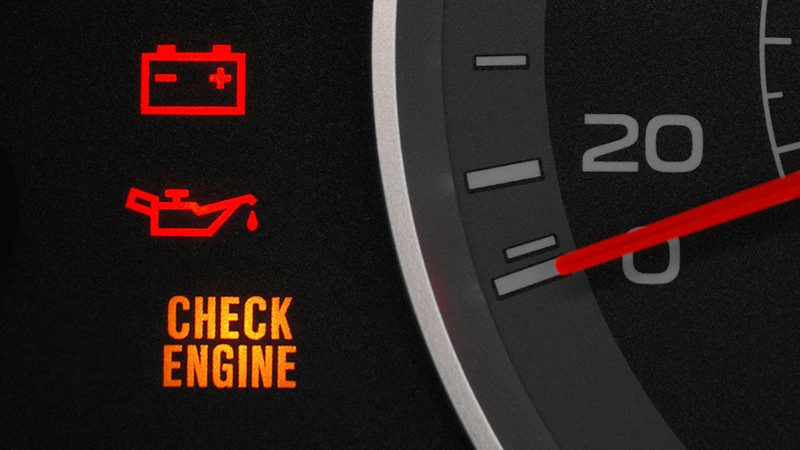
FAQs
1. What is the most common reason for a check engine light?
The most common cause is a loose or faulty gas cap. This simple issue can disrupt the fuel vapor system and trigger the check engine light. Other frequent reasons include:
- Faulty oxygen sensor
- Malfunctioning mass airflow (MAF) sensor
- Worn spark plugs or ignition coils
- Catalytic converter problems
2. What is the first thing to check when the check engine light comes on?
Start by checking your gas cap—make sure it’s tightly secured. If the cap is loose or damaged, it can cause an emissions system error. If the cap is fine and the light stays on, scan your vehicle with an OBD-II diagnostic tool to retrieve the trouble codes and narrow down the issue.
3. Is a solid check engine light serious?
A solid (steady) check engine light usually signals a non-urgent issue—such as a faulty sensor or emissions problem. However, it should still be diagnosed soon to prevent further damage or performance loss.
If the light is flashing, that indicates a serious misfire or engine problem and you should stop driving immediately.
4. Can low oil cause a check engine light?
Yes, in some vehicles, low oil levels or pressure can trigger the check engine light—especially if it affects engine performance or causes overheating. However, most cars have a separate oil warning light. Either way, low oil should be addressed immediately to avoid engine damage.
Conclusion
All in all, the check engine light can point to all kinds of issues, some minor ones, and others a bit more serious.
Knowing what’s wrong, why it’s wrong, and how to fix it is often difficult, and not everyone has the tools or expertise for that. That’s why regular maintenance and high-quality parts are even more important—it’s always better to prevent problems than to fix them.

With 25 years in the industry, Nanjing Woda Auto Technology Co., Ltd provides top-quality engine, ignition, electrical, exhaust, suspension, and steering systems. Serving 100+ countries with 100,000+ products, we offer competitive pricing, reliable after-sales support, and on-time delivery. Partner with us for a seamless procurement experience—contact us today!

